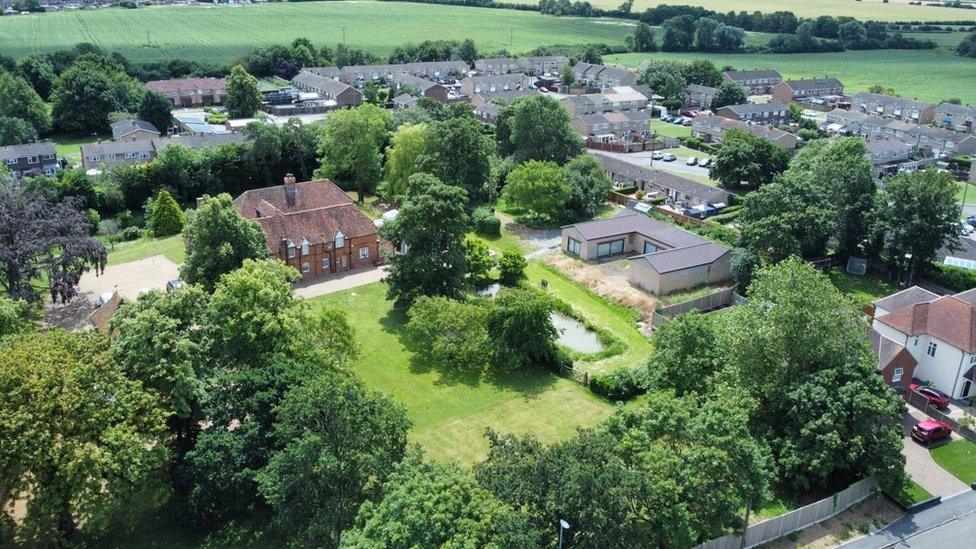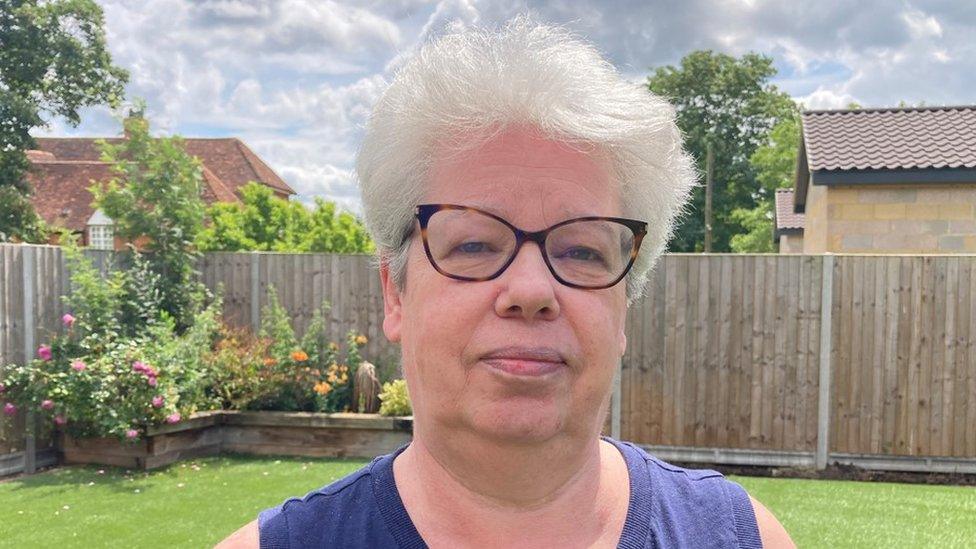Capt Sir Tom Moore: Date set for hearing over family's home spa
- Published

The spa (the C-shaped building to the right of the pond) is at the home where Capt Sir Tom Moore walked 100 laps of the garden in 2020, raising £33m for NHS Charities Together
A date has been set for a hearing to decide if the family of Capt Sir Tom Moore must demolish a spa they built in their garden.
The celebrated fundraiser's daughter Hannah Ingram-Moore and her husband are appealing against a demolition order, external.
They used the Captain Tom Foundation charity's name on the first plans for the building, with revised plans then turned down.
The Planning Inspectorate will hold a hearing on 17 October.
In planning documents, the family said the structure was "no more overbearing than the consented scheme".
Capt Sir Tom became internationally famous when he walked 100 laps of his garden in Marston Moretaine, Bedfordshire, at the start of the first Covid lockdown in 2020, raising £33m for NHS Charities Together.
He died in 2021, aged 100, and his family set up a separate charity in his name.

Captain Sir Tom Moore became famous for his fundraising efforts during the first coronavirus lockdown
The Ingram-Moores requested planning permission for a "Captain Tom Foundation Building", which they claimed was "for use by occupiers... and Captain Tom Foundation", according to documents submitted to Central Bedfordshire Council in August 2021.
The local authority granted permission for the single-storey structure to be built on the tennis courts at the Grade II-listed home.
Then, in February 2022, the family submitted revised plans for the already part-constructed building, which called it the "Captain Tom Building".
The plans included a spa pool, toilets and a kitchen, which the Design & Access and Heritage Statement said was "for private use".
In November, the council refused the retrospective planning permission for the revised plans.
Residents overlooked by the building have labelled it an "eyesore".
In legal papers, the council stated there were "significant differences" between the approved and constructed buildings and that it "does not consider that the requirement to demolish the building is excessive".
But in documents submitted for the Planning Inspectorate appeal, Colin Ingram-Moore said there were "no grounds supporting the refusal of the retrospective application" and asked the Inspectorate to uphold their appeal.

Follow East of England news on Facebook, external, Instagram, external and Twitter, external. Got a story? Email eastofenglandnews@bbc.co.uk, external or WhatsApp us on 0800 169 1830
- Published1 August 2023

- Published15 April

- Published6 July 2023

- Published5 July 2023

- Published4 July 2023
